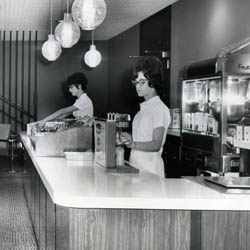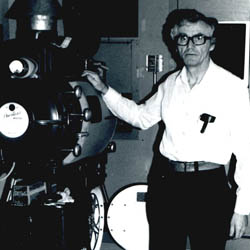Service industries focus on providing contributions of labour and skill, rather than tangible products, to both individual consumers and to other businesses. The services sector has been described as the economy's tertiary sector, distinct from the primary sector which includes industries such as agriculture, mining, and forestry, and a secondary sector which includes manufacturing industries.
Employees in the service sector work in a very wide variety of occupations. The images shown on this page and in the Service Industry gallery have been rather arbitrarily limited to those depicting paid domestic labour in the hospitality and entertainment industries. Additional service sector images may be found in the Repair and Maintenance gallery, especially images of laundry and dry-cleaning labour, and the Beautification gallery which is chiefly devoted to services provided by barbers, hairdressers and other cosmetologists.
The service sector is one of the largest and most rapidly growing segments of the Saskatchewan economy. The Saskatchewan Ministry of Advanced Education, Employment and Labour reports that in June 2009, 31,600 workers were employed in the Accommodation and Food Service industries. Food service workers include cooks and chefs; other kitchen help; hosts, waiters and waitresses; and bar staff. Workplaces may include fast food outlets and food courts, cafeterias, traditional dine-in restaurants, and catering firms.
Students and other young people, as well as women and new Canadians, are disproportionately represented in these jobs, which are often part-time or temporary. Hourly pay is typically near minimum wage although many in restaurants and bars have the opportunity to supplement their wage with tips. Labour union attempts to organize this group of workers have had only limited success.
Also included under this theme are images of workers involved in the entertainment business. One of oldest continuing union locals in Saskatoon is Local #300 of the IATSE, the International Alliance of Theatrical Stage Employees which received its charter in July 1913. The original charter was signed by 16 local workers. Stage work and film projection were the predominant craft of members until the 1930s.
Paid domestic work as cleaners, cooks, and nannies appears to be not uncommon, but for a number of reasons is poorly documented. Although full time house maids and cooks have been rare in Saskatchewan homes, it was not uncommon before the Great Depression for successful farmers and middle class families to employ live-in hired girls. This usual low- paid labour helped the wife cope with the enormous amount of work that was required about the home (and garden) before the expansion of electrical service and the introduction of labour saving appliances such as stoves, refrigerators, and washing machines.
One Saskatchewan woman's account of work as a live-in housekeeper can be found in a biography of Edna Diefenbaker, first wife of Canada's 13th prime minister:
Throughout the 1930s John provided help in their home so that Edna could be with him whenever he wanted, or needed her in court, on his campaigns, or in his travels. In the fall of 1936 Florence Pelletier, an attractive twenty-year-old, came into their home as a live-in housekeeper.... Edna heard about her and hired her as her first live-in housekeeper. She was paid $10 a month, plus room and board, later raised to $12.... Florence had good memories of her years in the Diefenbaker home: 'I was happy there. They were good to me. I was very young and they treated me almost as though I was their daughter. They were very careful – almost supervisory – about my dating and the hours I got in. I had freedom but I was supervised. Edna was then twelve or thirteen years older than I was and very protective of me.... I didn't make much, but managed because my mother was good at sewing and could make me clothes.'
~ Simma Holt. The Other Mrs. Diefenbaker. Toronto: Doubleday, 1982. pp. 151-152.


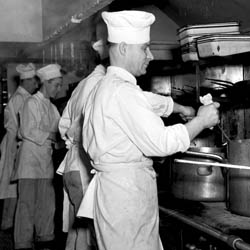
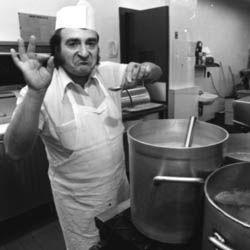
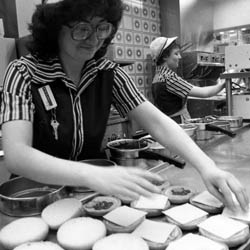
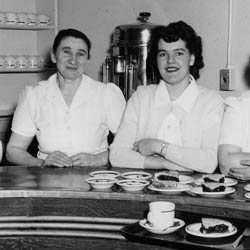
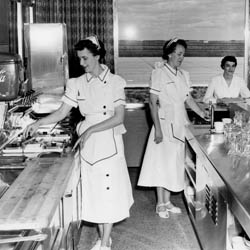
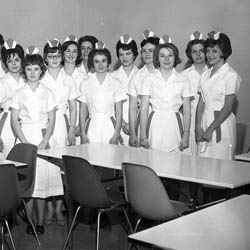
![Union Members Standing in Front of <br />Empire Theatre, ['ca. 1913']](cropthumbs/PH-91-3-5.jpg)
![Waitresses in Dining Room of <br />King Edward Hotel, ['ca. 1912']](cropthumbs/LH-1142.jpg)
